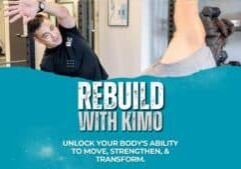What is posture therapy?
Posture therapy involves exercises and techniques to improve your body alignment and position. It aims to correct postural imbalances and relieve pain and discomfort caused by poor posture. The therapy focuses on strengthening muscles and stretching tight areas to achieve proper alignment of the body. It can also include education on ergonomic principles and lifestyle adjustments to maintain good posture. Overall, posture therapy aims to enhance overall physical well-being by addressing posture-related issues.
Understanding the importance of good posture
Maintaining good posture is essential for overall health and wellness. It helps prevent muscle strain, back pain, and other related issues. Good posture also contributes to a confident and positive body language. By being mindful of your posture, you can improve your physical appearance and reduce the risk of developing poor posture habits.
Common posture issues
Many people experience common posture issues, such as rounding of the shoulders, forward head posture, and excessive curvature of the lower back. These issues are often caused by prolonged sitting, improper lifting techniques, or poor body mechanics. It’s essential to address these posture problems to prevent long-term discomfort and potential health issues.
Benefits of posture therapy
Posture therapy can help improve your posture and alleviate associated pain. Some benefits of posture therapy include:
- Reduction of back and neck pain
- Increased flexibility and range of motion
- Correction of muscle imbalances
- Improved breathing and circulation
- Enhanced physical appearance and self-confidence
Techniques used in posture therapy
Posture therapy uses a variety of techniques to improve posture and alleviate pain. Some common techniques include:
- Stretching: Involves gentle, targeted stretching exercises to improve flexibility and reduce muscle tension.
- Strengthening: Focuses on exercises that target specific muscles to improve overall posture and support the spine.
- Alignment exercises: These are designed to realign the body and improve overall posture by correcting imbalances.
- Breathing exercises: Effective breathing patterns can help to relax and realign the body, reducing tension and improving posture.
Alignment and strengthening exercises
Alignment and strengthening exercises are essential components of posture therapy. These exercises help to improve your posture by aligning your body properly and strengthening the muscles that support your spine. Some exercises may include shoulder blade squeezes, wall angels, planks, and bridges. These exercises can help to reduce muscle imbalances, alleviate pain, and prevent future injury. Incorporating these exercises into your daily routine can contribute to better posture and overall physical well-being.
Posture correction equipment and aids
Posture correction equipment and aids come in various forms and can provide additional support for improving posture. Some examples include posture corrector braces, ergonomic chairs, standing desks, and posture-correcting cushions. These aids are designed to help you maintain proper spinal alignment and reduce strain on your back and neck muscles. It’s important to consult a posture therapist or healthcare professional before using any aids to ensure they are suitable for your specific needs.
How to improve posture at home and at work
Improving your posture at home and work can greatly benefit your overall health. Here are some simple techniques you can try:
- Sit and stand up straight to keep your spine properly aligned
- Take regular breaks from sitting to stretch and walk around
- Set up an ergonomic workspace with a supportive chair and adjustable desk
- Practice posture exercises like shoulder blade squeezes and chin tucks to strengthen your muscles
By incorporating these techniques into your daily routine, you can gradually improve your posture and reduce discomfort.
Geting help for posture therapy at Head 2 Toe
Posture therapy is best addressed by our team of doctors and athletic trainers. Our team can assess your posture, identify any underlying issues, and develop a personalized plan to improve your posture and overall musculoskeletal health. Seeking professional help ensures that you receive expert guidance and tailored exercises to address your specific postural concerns, leading to long-term benefits.
Incorporating posture therapy into daily life
To incorporate posture therapy into your daily life, you can start by being mindful of your posture throughout the day. Here are some simple techniques to help improve your posture:
- Set reminders to check your posture periodically, especially if you have a desk job that requires long hours of sitting.
- Practice good posture while standing, sitting, and walking. Keep your shoulders back, chin parallel to the ground, and avoid slouching.
- Use ergonomic furniture and accessories, such as a supportive chair and an adjustable desk, to promote proper spine alignment.
- Engage in posture-improving exercises, such as yoga, Pilates, and strength training, to strengthen your core muscles and enhance your overall posture.
- Consider seeking professional guidance from a posture therapist or physical therapist to develop a personalized plan for addressing specific posture issues.
Injury-Proof Your Body: How the REBUILD Program Can Help You Prevent Future Pain and Injury
We all know the frustration of an injury that sidelines us from the activities we love. Whether it’s a nagging backache that keeps you from your favorite sport or a sudden sprain that throws off your daily routine, pain and limitations can significantly impact our quality of life. But what if there was a way…
Read MoreBalancing Act: The Impact of Sports Injury Clinics on Work-Life Balance.
Explore how a sports injury clinic can improve your work-life balance in our blog ‘Balancing Act: The Impact of Sports Injury Clinics on Work-Life Balance’.
Read MoreAre Corrective Exercises Effective in Injury Recovery?
Explore the effectiveness of corrective exercises in injury recovery in our blog ‘Are Corrective Exercises Effective in Injury Recovery?’
Read MoreAdvanced Chiro Rehab Techniques: A Revolution in Pain Management
Discover groundbreaking chiro rehab techniques transforming pain management in our blog ‘Advanced Chiro Rehab Techniques: A Revolution in Pain Management’.
Read MoreUnderstanding the Importance of Spinal Rehab for Back Pain
Discover the crucial role of spinal rehab in managing back pain in our insightful blog ‘Understanding the Importance of Spinal Rehab for Back Pain’.
Read MoreExercises You Can Do at Home after a Visit to the Chiropractic Clinic
Stay active at home with exercises from ‘Exercises You Can Do at Home after a Visit to the Chiropractic Clinic’.
Read More






